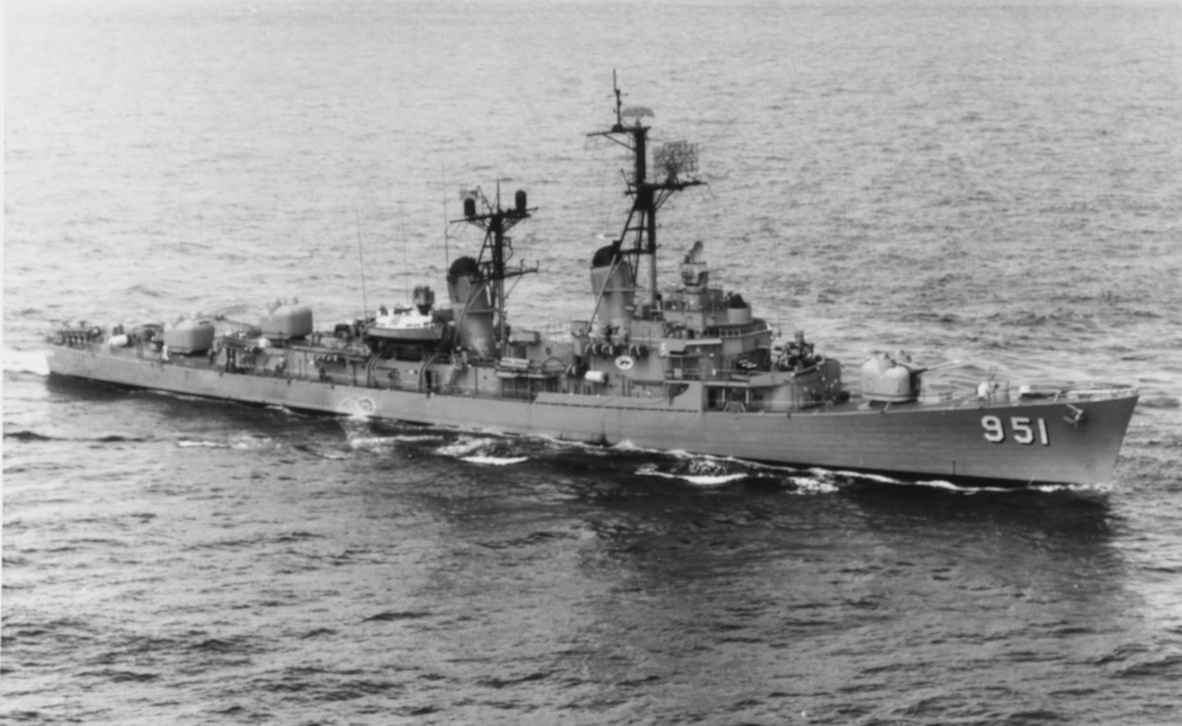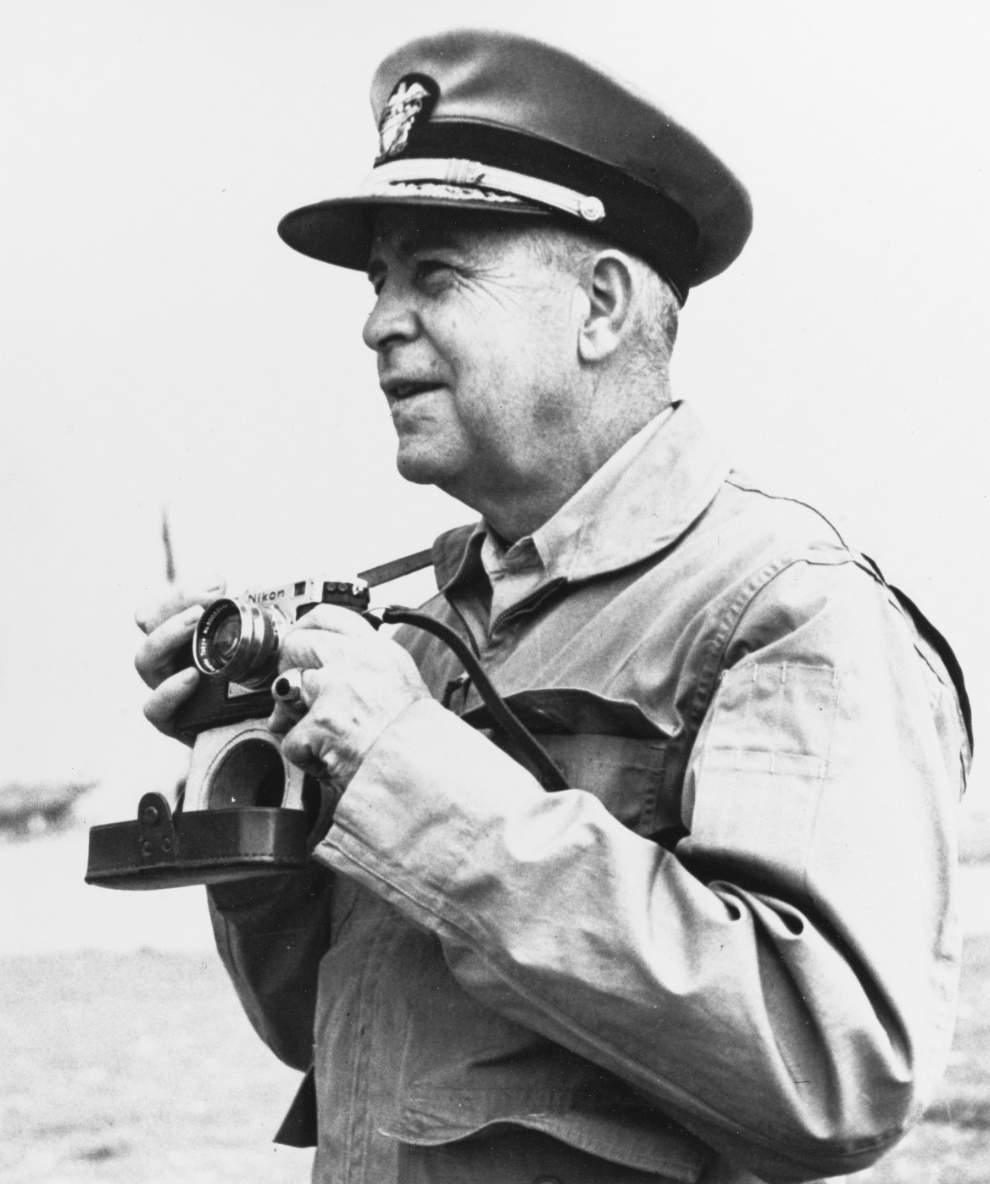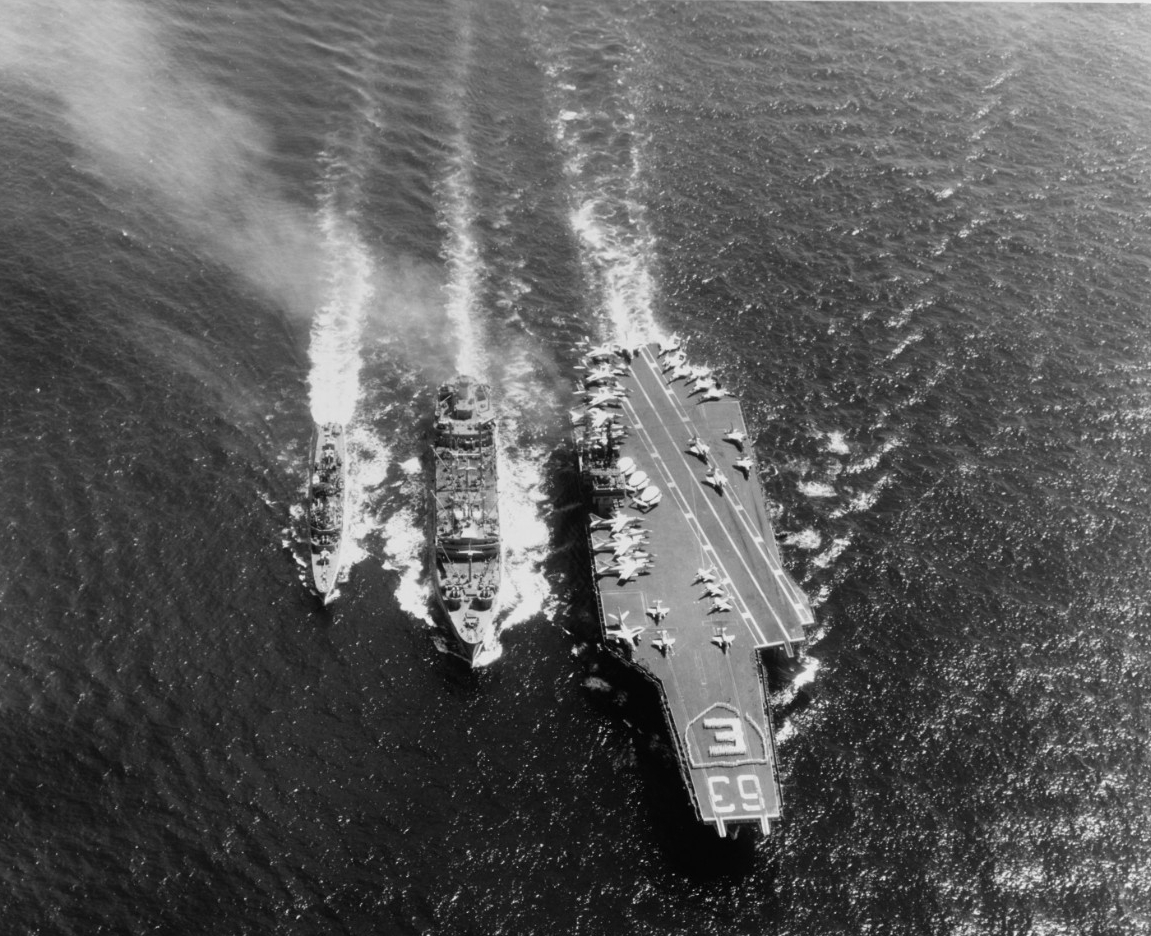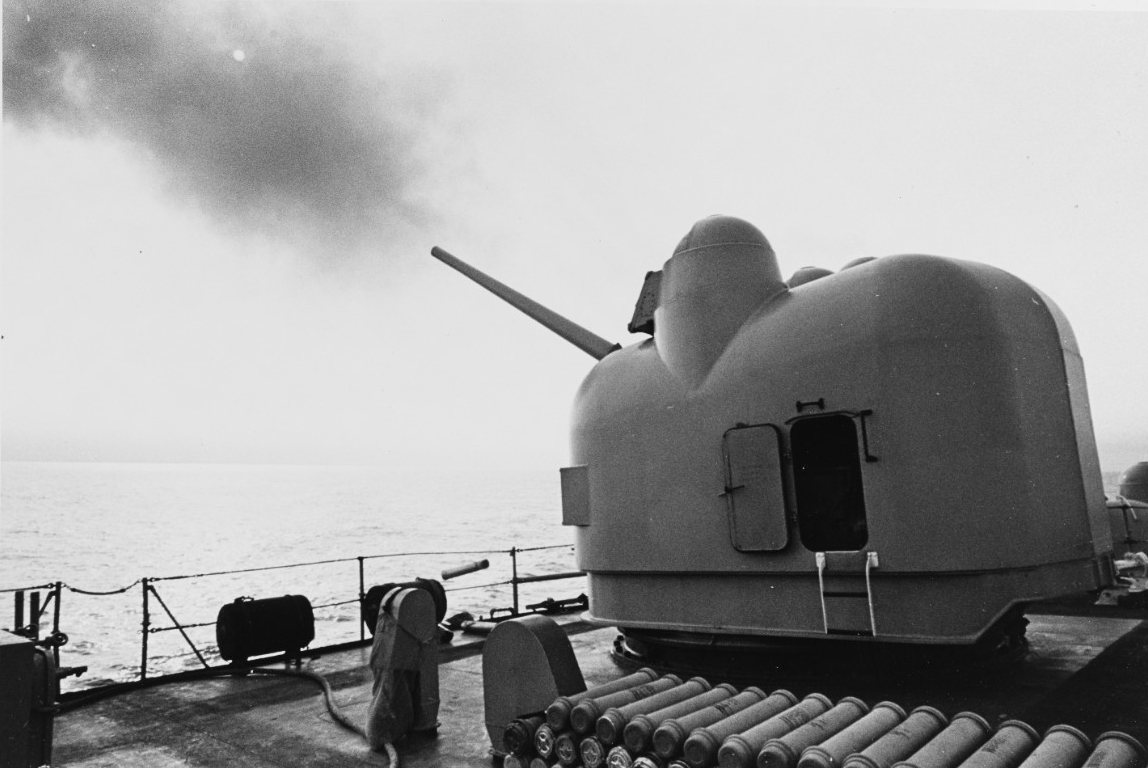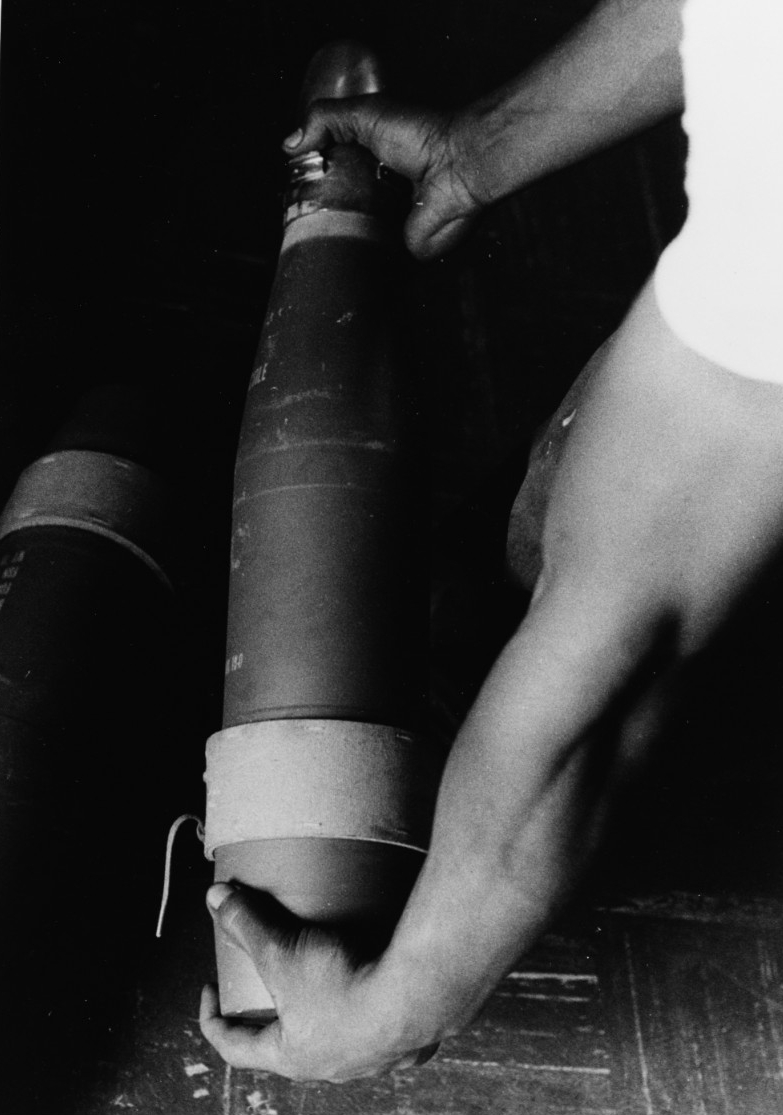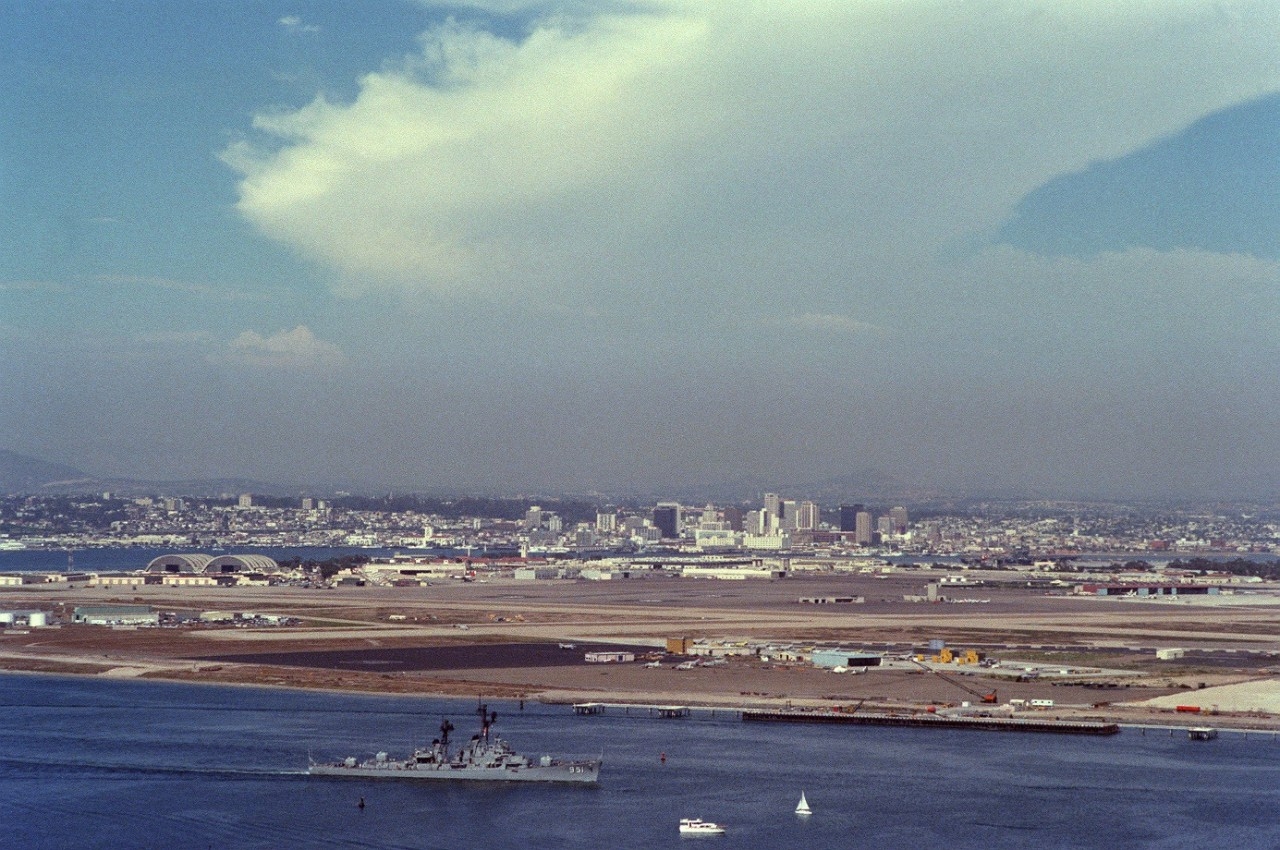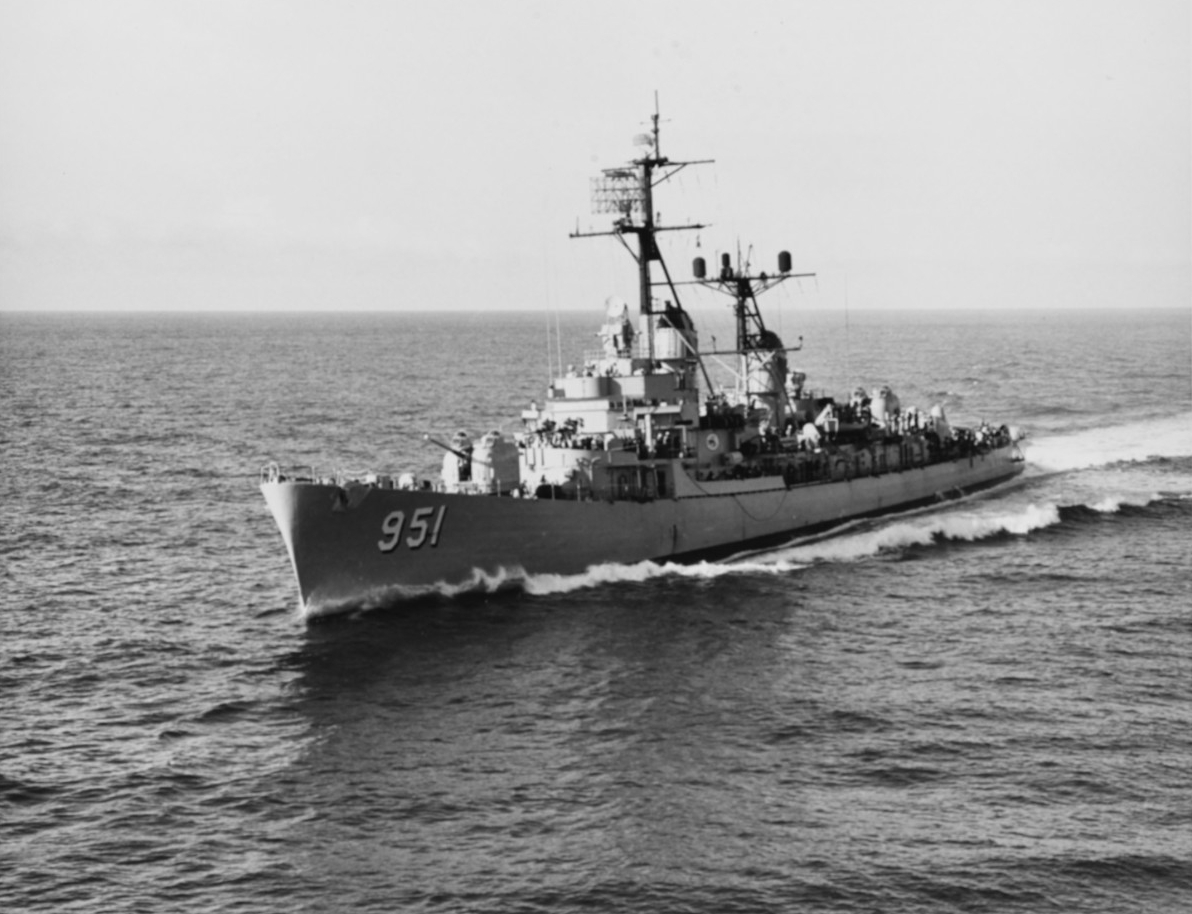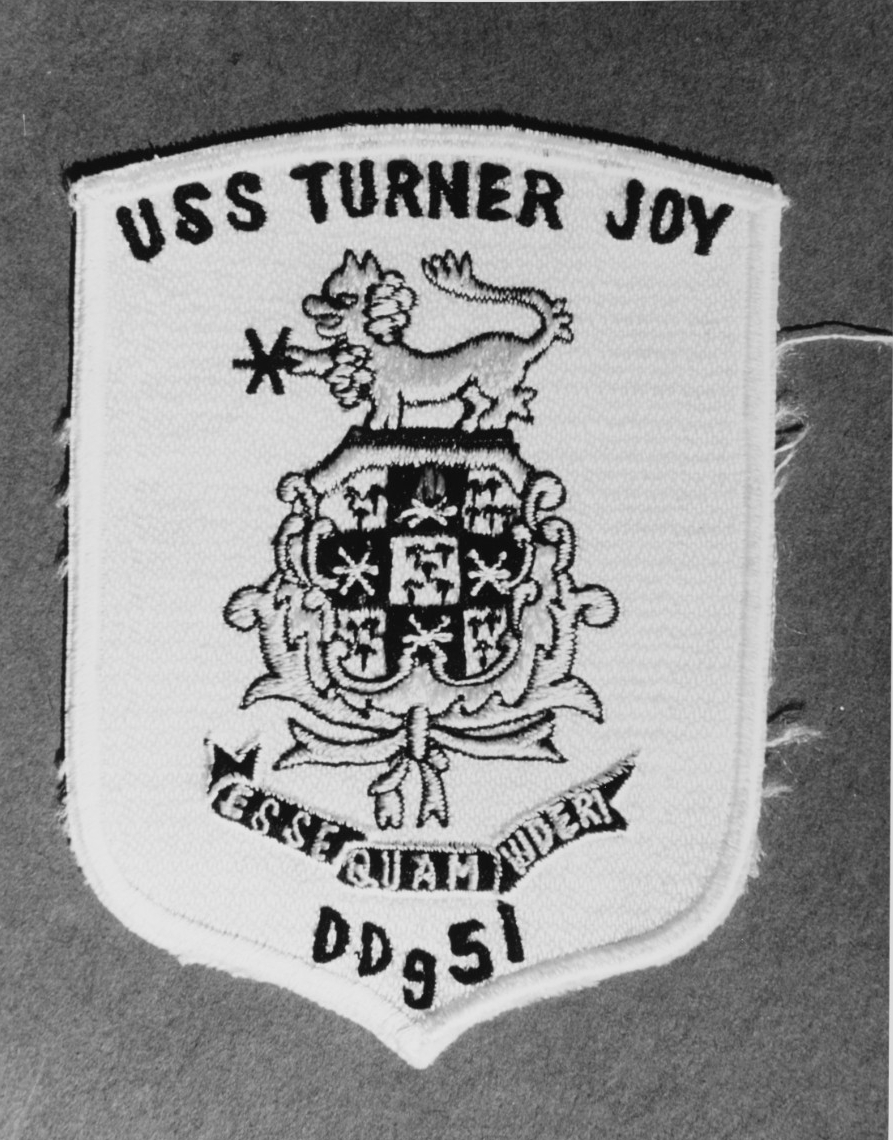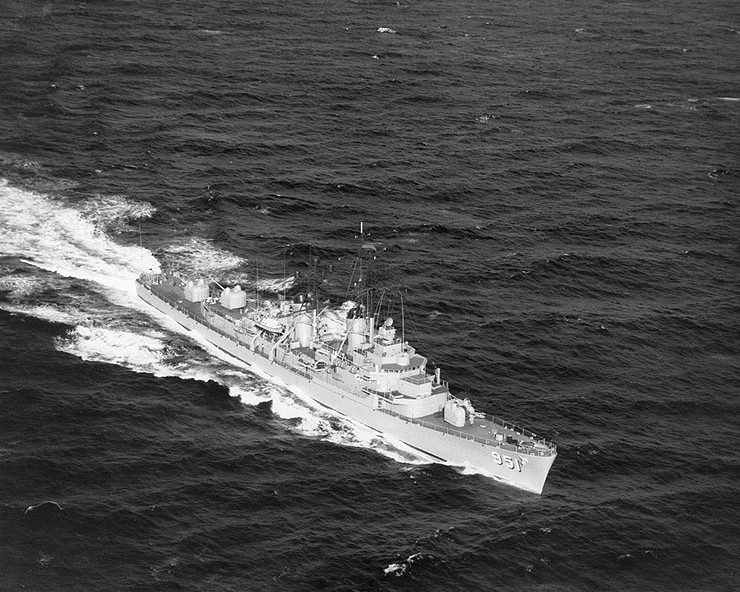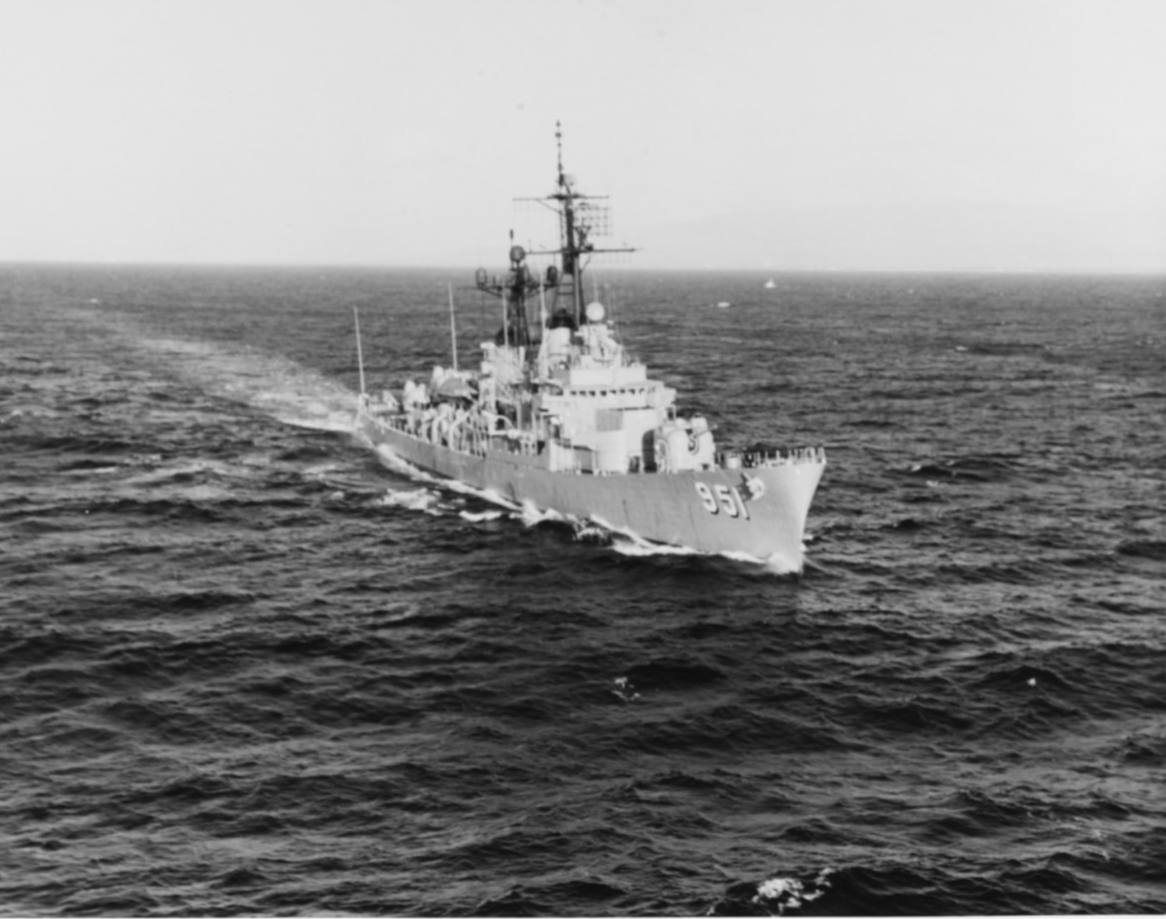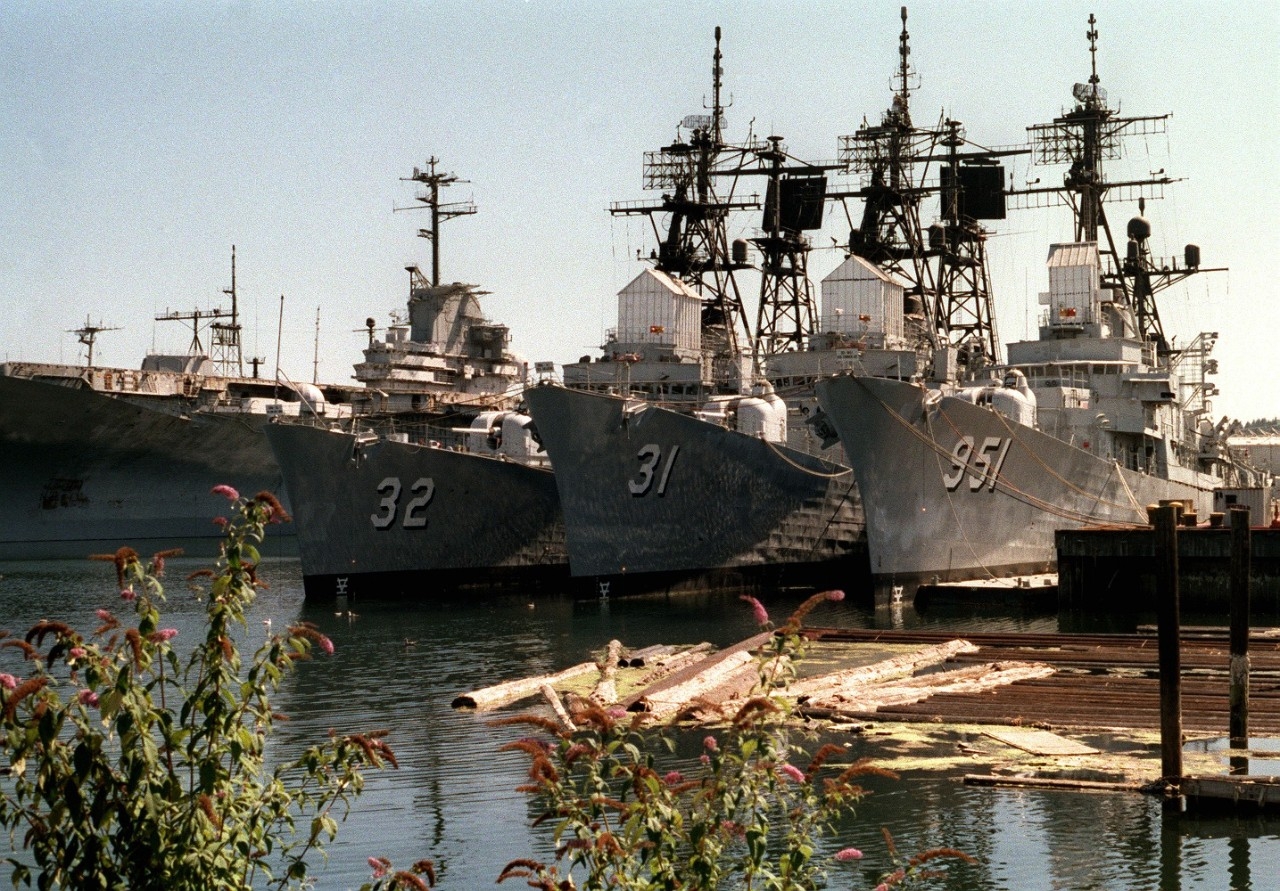USS Turner Joy (DD-951)
Forrest Sherman-class destroyer USS Turner Joy (DD-951) was commissioned on 3 August 1959 with Commander Ralph S. Wentworth, Jr., in command. The ship was named for Admiral Charles Turner Joy, who began his naval service when he entered the U.S. Naval Academy in 1912 and graduated in June 1916. He served as an ensign onboard Pennsylvania (Battleship No. 38) in World War I, and during World War II, commanded Louisville (CA-28) with participation in the Aleutian and Guadalcanal campaigns. At the height of his naval career, Joy commanded all United Nations naval forces from June 1950 to May 1952 during the Korean War. His career culminated when he served as superintendent of the U.S. Naval Academy.
After commissioning, Turner Joy began duty as flagship for both Destroyer Squadron 13 and Destroyer Division 131. Homeported in Long Beach, California, the ship was part of an antisubmarine task group built around USS Hornet (CVS-12). The task group conducted several exercises along the California coast before it steamed for the western Pacific in May 1960. After brief stops at Pearl Harbor and Apra, Guam, the destroyer was on station in the Marianas for sea-rescue duty during President Dwight D. Eisenhower’s diplomatic visit to several Asian nations. In response to Eisenhower’s visit to Taiwan, Communist China audaciously shelled the tiny islands of Quemoy and Matsu in July. Following a tense month of patrols in the Taiwan Strait to show support for one of America’s allies, the destroyer moved north in mid-August for exercises with Seventh Fleet aircraft carriers along the coast of Japan. After exercises were complete, Turner Joy was underway back to Long Beach, arriving 16 November.
For the next 18 months, Turner Joy underwent an extensive overhaul and participated in numerous First Fleet exercises along the California coast. On 2 June 1962, as part of an antisubmarine task group, the destroyer steamed for the Far East, where it would operate off Honshu, Japan. Just as on the ship’s first western Pacific deployment, Turner Joy participated in numerous routine exercises with Seventh Fleet before returning to home station on 21 December. Until March 1964, Turner Joy operated off the U.S. west coast where it participated in multiple exercises with First Fleet.
On 13 March, Turner Joy made way to the western Pacific for the ship’s third deployment. During the first few months, operations were seemingly routine. In late July, Turner Joy was attached to a carrier task group built around USS Ticonderoga (CVA-14) that was conducting “watch dog” patrols off the coast of Vietnam. On 2 August, while cruising in international waters, USS Maddox (DD-731) was brazenly attacked by three North Vietnamese motor torpedo boats. Maddox, along with aircraft from Ticonderoga, managed to destroy two of the torpedo boats before Turner Joy arrived. However, the third torpedo boat escaped. No American crewmembers were killed or injured during the attack, and Maddox did not sustain serious damage. Turner Joy remained in proximity of Maddox and they continued to patrol the area. Less than 48 hours later, Turner Joy’s radar detected numerous small surface craft coming within range, and Ticonderoga was called for air support. By nightfall, the unidentified echoes suggested that North Vietnamese craft were converging on the American ships from the west and south. Turner Joy’s crew reported that one, possibly two, torpedo wakes were detected. Turner Joy went to full-speed, maneuvered radically to avoid the incoming torpedoes, and began firing in the direction of the radar blips. Over the next two and a half hours, Turner Joy continued to engage the unknown targets. Reports claimed that two of the targets were sunk by direct hits and another two were severely damaged. Whether or not the North Vietnamese attacked on 4 December is up for debate. No wreckage was ever found. It is possible that the blips could have been just bad weather, for which the Gulf of Tonkin is infamous. Regardless, the attacks prompted American retaliation. The following day, another attack aircraft carrier, USS Constellation (CVA-64), joined Ticonderoga off North Vietnam. Together, they launched 64 sorties against North Vietnamese bases. Planes from Constellation hit the motor torpedo boat bases at Hongay and Loc Chao in the north while Ticonderoga aircraft went after three targets in the south—Quang Khe and Phuc Loi, as well as the Vinh oil storage depot. The Gulf of Tonkin incident permitted President Lyndon B. Johnson and Secretary of Defense Robert McNamara, via the Tonkin Resolution, to greatly escalate U.S. military involvement in Vietnam. After the incident, Turner Joy resumed to more routine operations in the South China Sea. The ship returned to Long Beach exactly two months after the North Vietnamese attack.
After an overhaul and a series of normal operations, Turner Joy departed Long Beach in July 1965 for another deployment to the Far East, and 21-days later, joined USS Coral Sea (CVA-43). During August and most of September, the destroyer served both as an escort for the carrier and as a detached radar picket ship. On 23 September, Turner Joy moved into the Gulf of Thailand near the west coast of South Vietnam to participate in one of the earliest naval gunfire support missions conducted along that section of the coastline. Later, the destroyer steamed along the southeastern portion of South Vietnam. On 25 October, the ship provided call-fire for American and South Vietnamese troops on the ground operating in the vicinity of Chu Lai. During the mission, Turner Joy’s guns destroyed a number of enemy positions and figured prominently in the repulse of a Viet Cong attack. Near the conclusion of the action, a 5-inch round misfired, and during efforts to clear the chamber, the round detonated. The ensuing explosion killed three Sailors, wounded another three, and damaged the gun mount. The tragic event forced the ship from the combat zone. After weeks of repair, Turner Joy departed Subic Bay with Ticonderoga for screening duty in the South China Sea, followed by port calls in Hong Kong and Yokosuka, Japan. The ship returned to gunfire support operations on Yankee Station, but it only lasted two weeks before the ship was ordered home. Turner Bay arrived at Long Beach on 1 February 1966.
After overhaul, various port calls on the U.S. west coast, and participation in fleet exercise “Baseline II,” Turner Joy prepared for another tour of duty to the western Pacific. On 18 November, the destroyer departed Long Beach and made stops at Pearl Harbor, Midway, and Guam, before it entered port at Kaohsiung, Taiwan, on 11 December. During the ship’s fourth deployment to the Far East, Turner Joy completed three tours of duty off the coast of Vietnam. The first two tours were off the coast of South Vietnam in support of II Corps and I Corps, respectively. The support consisted of shore bombardments and gunfire support for troops operating ashore. On 21 March 1967, Turner Joy moved into position for its third tour of duty. However, this time it was off the coast of North Vietnam. Instead of providing direct support for American and South Vietnamese troops on the ground, this time the support was interdicting enemy logistical efforts through Operation Sea Dragon. Though primarily directed at the enemy’s waterborne logistics, Sea Dragon also struck wherever possible at overland supply lines. During the operation, Turner Joy fired on a number of shore targets and waterborne logistics craft during its 26 days on station. On 7 April, while firing on enemy craft beached near Cap Mui Ron, the destroyer came under heavy fire from a North Vietnamese shore battery. During the exchange, Turner Joy suffered a direct hit on the fantail and a near-miss air burst above the forward mast. The hit astern penetrated the deck to the supply office, causing minor damage in the overhead. Shrapnel from near misses wounded a member of the repair team and peppered the ship’s bow. The air burst put the ship’s air-search radar out of service. However, the damage was not severe enough to curtail its tour of duty. Turner Joy remained on station until relieved by HMAS Hobart. After repairs in Subic Bay, Turner Joy made way for New Zealand and Australia to take part in the commemoration of the 25th anniversary of the Battle of the Coral Sea. After the celebration, the ship was underway for Long Beach, arriving 8 June.
After a lengthy period of restricted availability, Turner Joy stood out of Long Beach in preparation for the ship’s fifth deployment to the Far East. After stops at Oahu, Midway, and Guam, Turner Joy arrived at Subic Bay on 4 April 1968. Over the following five months, the destroyer operated off the coast of Vietnam as in previous deployments providing gunfire support for American and South Vietnamese troops. The ship also conducted Sea Dragon patrols along the coast of North Vietnam to interdict enemy waterborne logistics traffic. Turner Joy completed its last extended tour of duty off Vietnam when it made way for Long Beach, arriving 26 September.
Although Turner Joy would occasionally provide gunfire support off Vietnam for the duration of America’s participation in the war, the ship operated primarily off the California coast for the rest of its naval service. Turner Joy earned nine battle stars for its service during the Vietnam War. On 22 November 1982, Turner Joy was decommissioned. Today, it serves as a museum ship moored in Bremerton, Washington.
*****
Suggested Reading
- H-Gram 009-3: Significant U.S. Navy Operations and Events in Vietnam Through 1967
- Tonkin Gulf Crisis
- USS Turner Joy (DD-951) Action Report for Gulf of Tonkin, 4 August 1964
- Skunks, Bogies, Silent Hounds, and the Flying Fish: The Gulf of Tonkin Mystery, 2–4 August 1964
- USS Turner Joy (DD-951) Command Action Report, 1959–1965
- The U.S. Navy in the Cold War Era, 1945–1991
- Surface Navy
Interviews with USS Turner Joy (DD-951) Crewmembers
Selected Imagery
Laid up at a naval inactive ship maintenance facility at Puget Sound Naval Shipyard, Washington, are (from left) guided missile destroyer USS John Paul Jones (DDG-32), guided missile destroyer USS Decatur (DDG-31), and destroyer USS Turner Joy (DD-951), 25 January 1990. National Archives identifier, 6450780.

